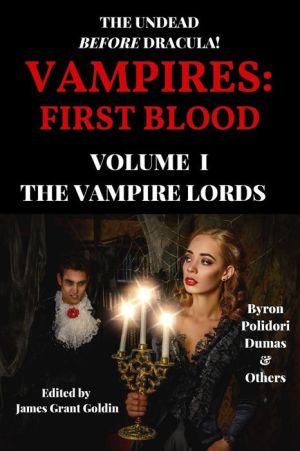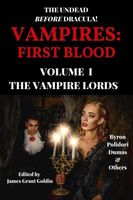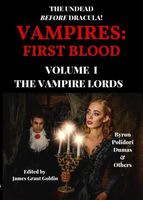- Welcome to FictionDB, Guest
- | My Account
- | Help

Vampires — George Gordon Byron

Who are the literary ancestors of Dracula? How did the classic vampire--the tall, dark, elegant aristocrat with an endless life and an unquenchable thirst for blood--become a mass-media star? James Grant Goldin presents a curated anthology of the original texts, some freshly translated, that trace the evolution of the vampire lord in the 18th and 19th centuries. Newspaper accounts of "real" vampires in the Austro-Hungarian Empire bring word of a new kind of monster to England, France, and Germany in the 1700s. Poets experiment with the vampire, often emphasizing sexual undercurrents ignored or glossed over in official reports. In the early 1800s, George Gordon, Lord Byron, provides the template for all male vampires to come: a brooding aristocrat, irresistibly attractive but cursed to bring doom to those around him. After the Byronesque Lord Ruthven in John Polidori's seminal "The Vampyre: A Tale," almost all vampires will be literal aristocrats -- a metamorphosis from the bloodsucking peasants of the 18th century. A secret society of vampires hold elegant balls in the heart of Moscow, Sir Francis Varney stalks an English country house in the early Victorian Age, and the sexy Carpathian Count Kostaki menaces a beautiful woman half a century before Bram Stoker's "Dracula." VAMPIRES: FIRST BLOOD VOLUME I - THE VAMPIRE LORDS collects the original adventures of the nosferatu who set the stage for Dracula, Barnabas, Lestat, and Edward -- bringing them out of the dark shadows and back to the attention of 21st century readers, complete with introductory notes and detailed glossaries to make these stories of the undead come alive for a new generation.
"Arnold Paul" by Calmet and others
"The Vampire" by Ossenfelder
"The Vampyre" by Stagg
"The Burial: A Fragment" by Byron
"The Vampyre" by Polidori
"The Family of the Vourdalak" by Tolstoy
"Ghoul" (excerpt) by Tolstoy
"Varney the Vampyre" (excerpts) by Rymer
"The Pale Lady" by Dumas and Bocage
"Arnold Paul" by Calmet and others
"The Vampire" by Ossenfelder
"The Vampyre" by Stagg
"The Burial: A Fragment" by Byron
"The Vampyre" by Polidori
"The Family of the Vourdalak" by Tolstoy
"Ghoul" (excerpt) by Tolstoy
"Varney the Vampyre" (excerpts) by Rymer
"The Pale Lady" by Dumas and Bocage
Click on any of the links above to see more books like this one.

